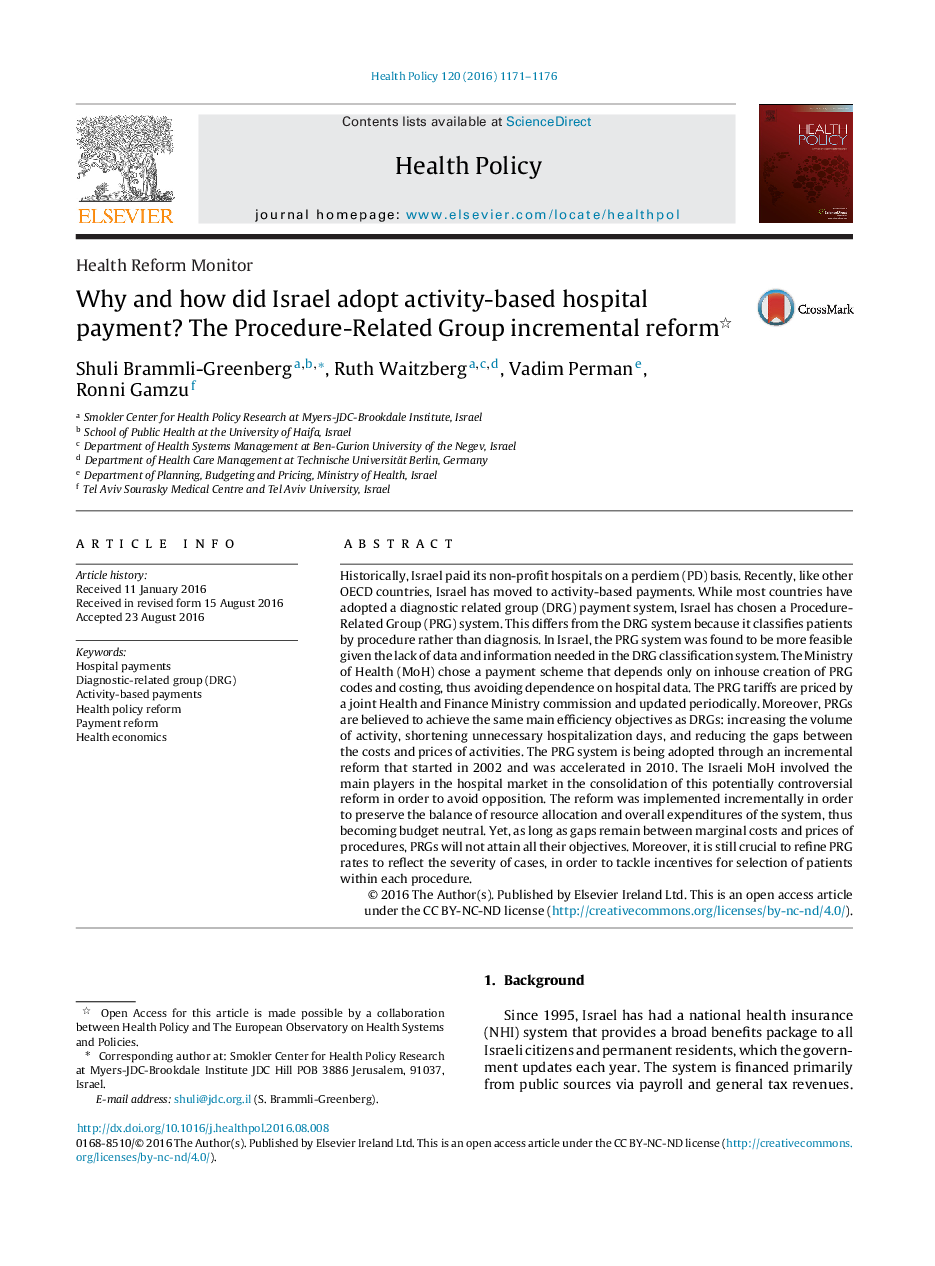| کد مقاله | کد نشریه | سال انتشار | مقاله انگلیسی | نسخه تمام متن |
|---|---|---|---|---|
| 5723395 | 1411447 | 2016 | 6 صفحه PDF | دانلود رایگان |
- Since 2002, Israel has been adopting “Procedure-Related Group” (PRG) as hospital payments.
- It also set consistent costing and pricing mechanisms.
- One objective was to improve regulators' capacity to set policy, supervise and control.
- Regulators, purchasers and providers were involved in the designing the reform.
- PRGs are a simple alternative to DRGs when no sufficient data is available.
Historically, Israel paid its non-profit hospitals on a perdiem (PD) basis. Recently, like other OECD countries, Israel has moved to activity-based payments. While most countries have adopted a diagnostic related group (DRG) payment system, Israel has chosen a Procedure-Related Group (PRG) system. This differs from the DRG system because it classifies patients by procedure rather than diagnosis. In Israel, the PRG system was found to be more feasible given the lack of data and information needed in the DRG classification system. The Ministry of Health (MoH) chose a payment scheme that depends only on inhouse creation of PRG codes and costing, thus avoiding dependence on hospital data. The PRG tariffs are priced by a joint Health and Finance Ministry commission and updated periodically. Moreover, PRGs are believed to achieve the same main efficiency objectives as DRGs: increasing the volume of activity, shortening unnecessary hospitalization days, and reducing the gaps between the costs and prices of activities. The PRG system is being adopted through an incremental reform that started in 2002 and was accelerated in 2010. The Israeli MoH involved the main players in the hospital market in the consolidation of this potentially controversial reform in order to avoid opposition. The reform was implemented incrementally in order to preserve the balance of resource allocation and overall expenditures of the system, thus becoming budget neutral. Yet, as long as gaps remain between marginal costs and prices of procedures, PRGs will not attain all their objectives. Moreover, it is still crucial to refine PRG rates to reflect the severity of cases, in order to tackle incentives for selection of patients within each procedure.
Journal: Health Policy - Volume 120, Issue 10, October 2016, Pages 1171-1176
